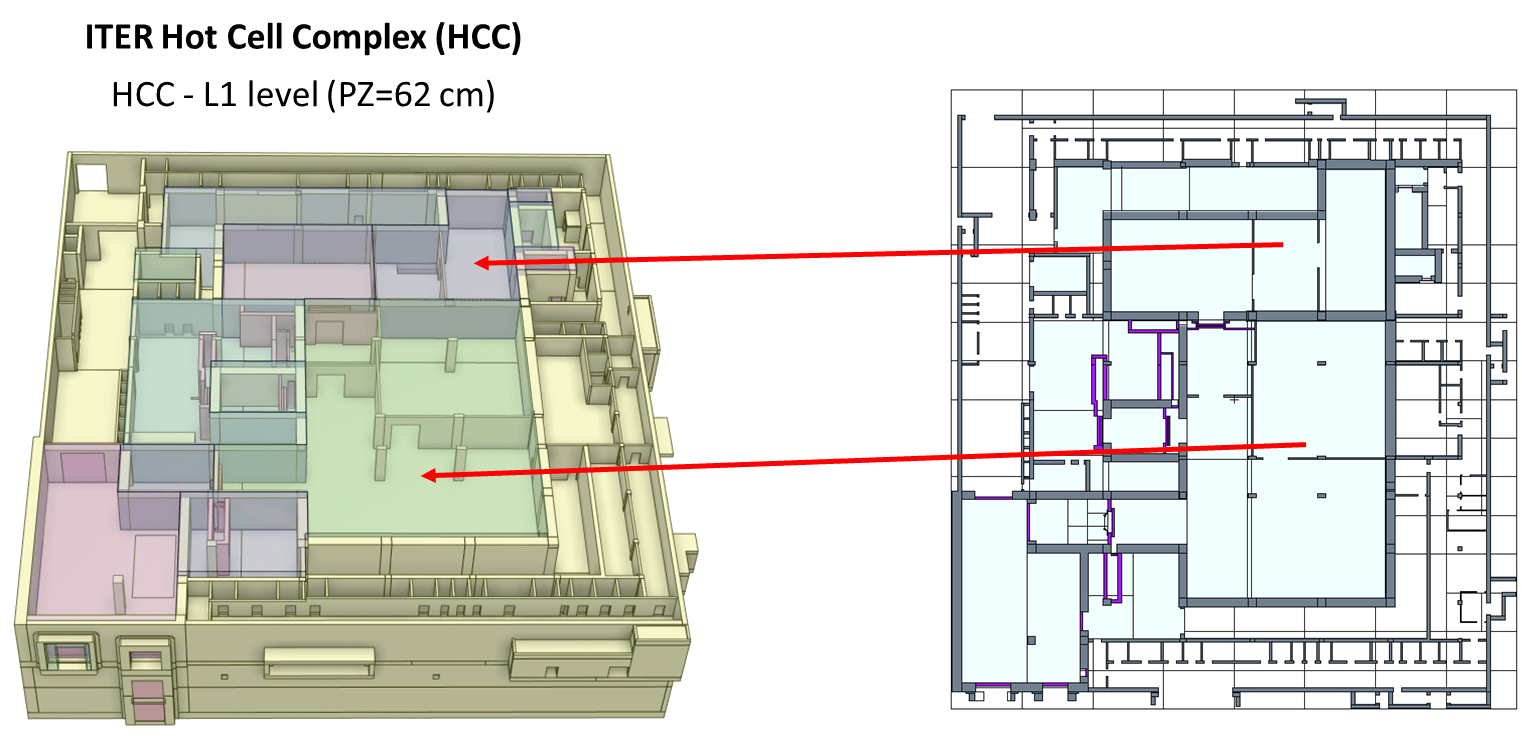Simulation software tools are a useful ally for fusion engineers when designing ITER components, for instance. GEOUNED, a programme developed by UNED with the support of Fusion for Energy (F4E), is one of the latest innovations in the field.
The software, tailored for fusion, converts 3D CAD engineering models into Monte Carlo radiation transport models and vice versa. This can help experts calculate and visualise particle dynamics in relation to the geometry or materials of specific components.
Crucially, GEOUNED provides a solid open-source solution for companies that previously were limited to costly non-European alternatives. The technology, included in the portfolio of the European Fusion Technology Marketplace, is now being adopted by ENUSA, a leading player in the nuclear fission sector which will use the software in their transition to the fusion market.

The Department of Industrial Engineering of UNED, a Spanish public university, developed GEOUNED as a tool for ITER, in collaboration with the Engineering Group at F4E. Thanks to UNED’s expertise and experience in other contracts with F4E, the developers optimised the software to meet the demanding requirements of fusion.
“The international collaboration behind GEOUNED, led by F4E and UNED, with the support of UKAEA/ENEA, has been essential to fill the existing gaps and ensure that the tool meets the standards of fusion research. Its adaptability and open-source nature make it valuable not only for fusion but also for other industries that use advanced radiation transport modeling.” — Aljaz Kolsek, Technical Officer, F4E.
GEOUNED, an accessible and easy-to-install tool, stands out for many of its features. It includes a decomposition algorithm, which breaks complex 3D models into parts, and automatic void generation, avoiding human errors in defining the space between components. All these automated functions are very well-suited for sophisticated models in fusion neutronics, like the ones in ITER.
Given its potential, F4E is supporting GEOUNED through its Technology Transfer Programme, in collaboration with Viromii. The aim is to promote its transformation from a research code to one widely adopted in the neutronics community.
One promising example is ENUSA, a Spanish company that is adopting UNED’s software as part of a strategic shift towards the fusion market. The collaboration has started with a series of training sessions, during which UNED is teaching ENUSA’s team how to fully exploit GEOUNED’s functionalities and explore future customisations.
“At UNED, we have focused on creating a tool that can handle the complex requirements of fusion modeling. The partnership with ENUSA has shown how GEOUNED can not only meet these demands but also support companies as they step into the fusion sector.” — Juan Pablo Catalán, Lead Researcher, UNED.
Looking ahead, UNED and F4E aim to connect with other players, gradually expanding the use of GEOUNED to provide a quality solution for the nuclear and fusion industries.
You can also get in touch with us if you need any support